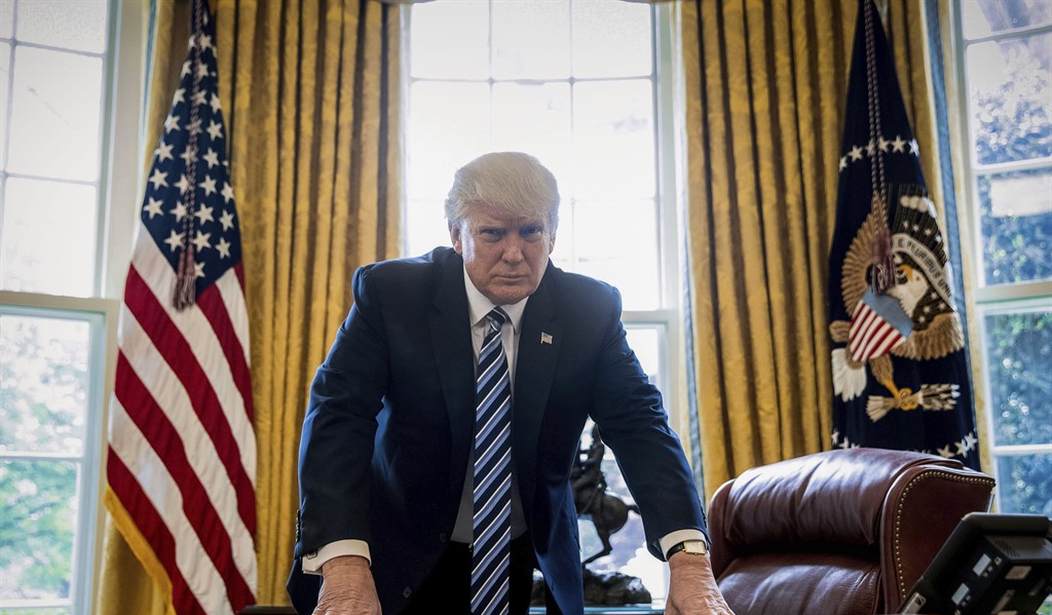Two weeks ago I would have called this a head pat for nationalists aimed at boosting morale now that Jared Kushner and Gary Cohn seem to have won the battle for influence with Steve Bannon. They’d draft the order, they’d wave it around for a day or two, and then they’d quietly table it. After two weeks of Trump grumbling about Canadian dairy prices and Canadian lumber, though, I don’t know.
Perhaps he’s serious about finally confronting the Maple Menace to the north.
A draft order [withdrawing the U.S. from NAFTA] has been submitted for the final stages of review and could be unveiled late this week or early next week, the officials said. The effort, which still could change in the coming days as more officials weigh in, would indicate the administration’s intent to withdraw from the sweeping pact by triggering the timeline set forth in the deal.
The approach appears designed to extract better terms with Canada and Mexico. President Donald Trump pledged on the campaign trail to renegotiate NAFTA, a trade deal signed in 1994 by former President Bill Clinton that removes tariffs and allows for the free flow of goods and services between the three countries in North America. Trump in recent weeks has stepped up his rhetoric vowing to terminate the agreement altogether…
Peter Navarro, the head of Trump’s National Trade Council, drafted the executive order in close cooperation with White House chief strategist Steve Bannon. The executive order was submitted this week to the staff secretary for the final stages of review, according to one of the White House officials.
Politico thinks this is a leverage play, aimed at getting Canada and Mexico to come to the table and renegotiate parts of NAFTA rather than an earnest attempt to tear up the agreement. Probably right. Wilbur Ross, Trump’s Commerce secretary, made a point of connecting NAFTA to the dairy dispute and the new U.S. lumber tariffs on Canada in public comments yesterday: “If NAFTA were functioning properly, you wouldn’t be having these kinds of very prickly, very unfortunate developments back to back.” Trump and Canadian PM Justin Trudeau discussed the trade disputes last night by phone, and while the White House described the chat as “amicable,” the Canadian take wasn’t as friendly:
“The Prime Minister and the President reaffirmed the importance of the mutually-beneficial Canada-US trade relationship. On the issue of softwood lumber, the Prime Minister refuted the baseless allegations by the U.S. Department of Commerce and the decision to impose unfair duties. The Prime Minister stressed that the Government of Canada will vigorously defend the interests of the Canadian softwood lumber industry, as we have successfully done in all past lumber disputes with the U.S. The two leaders agreed on the importance of reaching a negotiated agreement, recognizing the integrated nature of the industry between Canada and the United States.”
Insert a lengthy paragraph about the benefits the U.S. gets from the Canadian dairy industry here.
The lumber dispute between the U.S. and Canada recurs every 10 years or so and inevitably ends in a negotiated agreement. Maybe Trump’s rattling his saber on NAFTA because he thinks it’ll lead to more robust concessions on that lumber deal. But don’t be so sure he’s not thinking bigger. Although his opinions on many subjects are … malleable, as we learned recently in Syria, he’s always been a skeptic of major U.S. trade deals. And he’d have lots of support on the right if he really did want to start from scratch on NAFTA:

Big question: Can Trump withdraw the U.S. from NAFTA on his own say-so or does he need approval from Congress? Scott Lincicome, a trade lawyer (and ardent supporter of free trade), offers this synopsis he co-authored on the legal ins and outs of tearing up major trade deals. The verdict? Yes, Trump probably can unilaterally withdraw the U.S. from the agreement under the Trade Act of 1974 but the lawsuits challenging that authority could get messy. Case in point:
In Clinton v. City of New York[3], for example, the US Supreme Court ruled that the Line Item Veto Act of 1996 violated the Constitution’s “Presentment Clause” because it gave the President unilateral authority to amend or repeal laws that had been duly passed by Congress. This ruling would thus appear to provide legitimate legal grounds to argue that the Presentment Clause prohibits a President from unilaterally terminating an FTA implementing act, or that all of the various acts’ provisions on termination of a trade agreement must be interpreted by US courts (and the President) as permitting termination through only (i) withdrawal/termination by all other parties to the agreement; or (ii) formal action by the US Congress (i.e., bicameralism and presentment).
The safe play legally if you want to tear up NAFTA is to get Congress to pass a law repealing it, but that’s highly unlikely given Democratic obstructionism and conservative support for free trade. Trump would thus be rolling the dice in withdrawing unilaterally, and the resulting uncertainty while the legal challenge plays out in court would be bad news for the economy. Even worse, Lincicome’s group believes that if Trump does go the route of trying to renegotiate NAFTA rather than withdrawing from the agreement entirely, any substantive changes (apart from tariffs) probably would require Congress’s approval. Either way, if he’s serious about this, he should devote some retail time to building support for his plans among the public. But maybe he’s not serious about it.








Join the conversation as a VIP Member